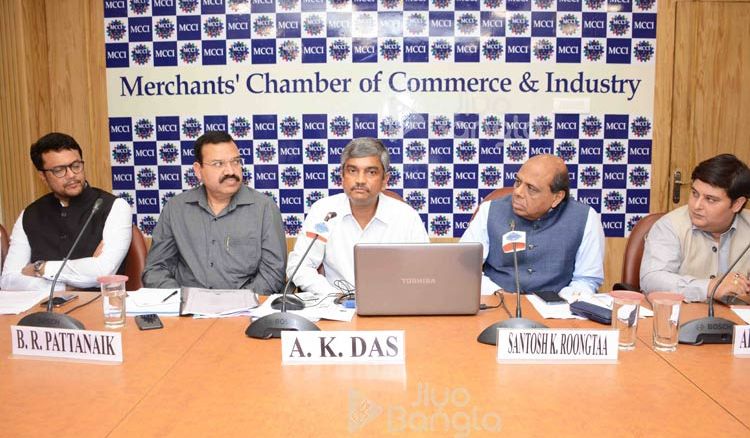In order to foray into newer overseas markets a new agriculture export policy is being drafted. At an interactive session on ‘Opportunity for capturing overseas markets through the new Agriculture Export Policy’ organised by the Merchants Chamber of Commerce and Industry (MCCI) on Wednesday, experts talked about its prospects.
AK Das, joint secretary, department of agricultural marketing of the state government said that the new Agriculture Export Policy was yet to be accepted by the state government.
Elaborating on the initiatives taken by the state government to give the farmers’ income a positive fillip, he said,
The state has 130 Sufal Bangla markets where produce is bought from farmers and through this initiative, the state is trying to aggregate farmers. As many as 17 Krishak Bazaars have been integrated with the eNAM portal. The market fee has been exempted for perishables such as fruits and vegetables and semi-perishables such as onion and potato.
The state government will put up an organic hub in Rajarhat where organic vegetables will be grown. In order to facilitate the marketing of horticulture crops, the policy of participatory farming has been introduced as an arrangement between Farmer Producer Companies (FPCs) and private entrepreneurs.
The state government has also identified clusters for mango at Nadia, Murshidabad and Malda districts. Clusters for potato have been identified at Hoogly, Purba Bardhaman and Paschim Medinipur districts.
BR Pattanaik, general manager, NABARD said that so far, India had no Agriculture Export Policy and it relied on ad hoc policies to support farmers. “The Agriculture Export Policy is a subsidiary policy of the larger policy to double farmers’ income and steps are being taken to integrate Indian agriculture with the world market. The quality of Indian produce will improve following tie ups with foreign buyers,” he said.
In a first, agriculture officers will be posted at 15 Indian embassies, including in the US, UK and Kazakhstan. They will promote Indian exports of agricultural commodities.
Offiicals said that exporters of agricultural commodities who are mostly in the MSME sector will have access to funds as RBI has made this a priority sector.
It is expected that the target of USD 60 billion in exports of agricultural produce by 2022 will be met through these initiatives. The Indian government is also mulling taking steps to diversify its food exports from its traditional basket of items. Since, the country holds a large amount of buffer stocks, the public should not be apprehensive that food exports will have a negative impact on the domestic food scenario. In the end, the Agriculture Export Policy has the potential to benefit 50 per cent of India’s population and make the sector a better prospect for employment.
Archiman Lahiri, deputy director, The Marine Products Export Development Authority (MPEDA) said that given the huge potential of marine exports, only 30 per cent usage of brackish water in the state and with certifications in place, the share of value added marine products should increase sharply.
 বাংলায় পড়ুন
বাংলায় পড়ুন














